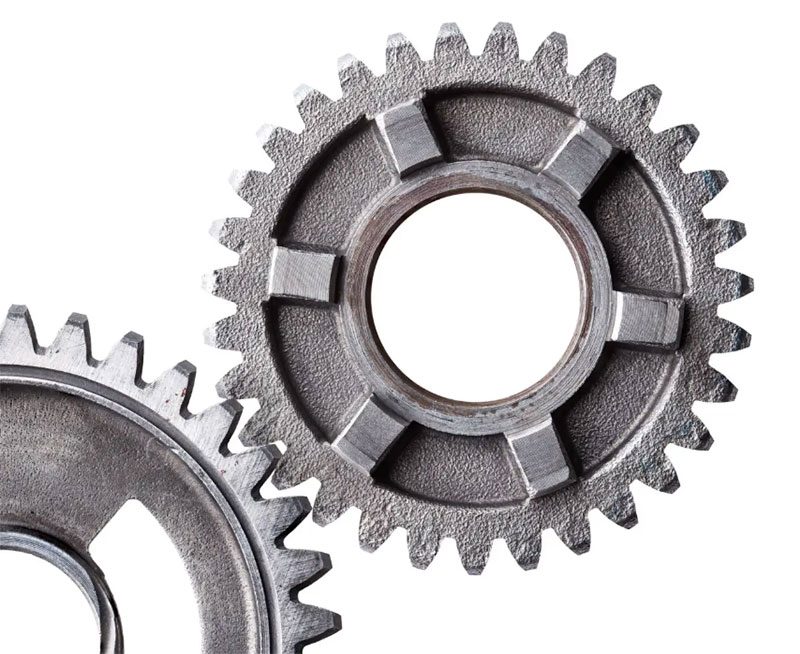Because roller chain sprockets support smooth movement, they are fundamental to automobile performance and comfort. This application focuses on roller chain sprocket inspection after the machining process.

What manufacturing defects occur?
Common manufacturing defects include:
These defects affect roller chain sprockets’ performance, longevity, and reliability and should be identified and addressed before sprockets are installed in machinery and become harder to reach.
However, these defects can be difficult to detect– roller chain sprockets have intricate geometries, especially in tooth profiles and pitch diameters, making defects difficult to see without specialized equipment. Their steel surfaces may reflect light in a way that masks defects. They can come in a variety of surface finishes, from matte to highly polished. These variations can affect how light is reflected and absorbed, which complicates inspection. And many defects are subtle and hard to image, especially if the defect’s contrast to the background is low. Traditional machine vision systems struggle to capture clear images and distinguish between actual defects, reflective surfaces with variable finishes, and the background, ultimately missing defects or causing false rejections.
The Solution
UnitX’s AI-powered inspection effectively detects sprocket defects where other solutions fail.
First, the OptiX imaging system illuminates and images sprockets. Then, the CorteX Central AI platform is trained on sprocket defects. Lastly, those AI models are deployed to the CorteX Edge inference system to detect and classify defects in-line.
Alternatively, manufacturers can use just CorteX AI if they have existing imaging systems. For example, if a manufacturer wants to detect internal sprocket defects, they can deploy just CorteX AI and integrate it with existing X-Ray and CT Scanners for fast deployment of improved defect detection.
Why UnitX for roller chain sprocket inspection?
OptiX provides superior images that minimize reflectivity while maximizing defect visibility. It has 32 independently controllable lighting sources that can be optimized for varying sprocket surfaces and defects via software. Its computational imaging capability can be used to take multiple shots and eliminate hotspots caused by highly reflective metal surfaces. And its lighting dome design supports a very acute incidence angle of projected light, causing even very tiny defects to cast shadows which increase their visibility.
CorteX accurately detects random, complex defects. It automatically normalizes for variability in positions and orientations and recognizes defects down to the pixel-level. It reduces false positives that lead to scrap and wasted product.
CorteX supports fast AI model development, deployment, and iteration. CorteX AI models are sample efficient– they only require a few images to train on new defect types.
UnitX optimizes yield. In CorteX, can tune quality criteria and visualize the impact on yield before rolling those changes to production. All inspection data is referenceable in one central platform for manufacturers to analyze and identify areas for process improvements.
UnitX provides rapid, 100% inline inspection. OptiX has bright LEDs and fast fly capture speeds of 1m/s for high speed imaging. And CorteX Edge supports high inference speeds (up to 100 MP) to quickly output an OK/NG decision, seamlessly communicating that decision via integration to all major PLC, MES, and FTP systems.
Manufacturers who use UnitX to automate roller chain sprocket inspection are able to:
- Prevent quality escapes that impact automobile reliability and performance
- Reduce scrap by minimizing false rejection rates common with traditional machine vision
- Improve yield by analyzing production and quality data for process improvement opportunities
- Automate inspection at the speed of their production to increase sprocket manufacturing throughput